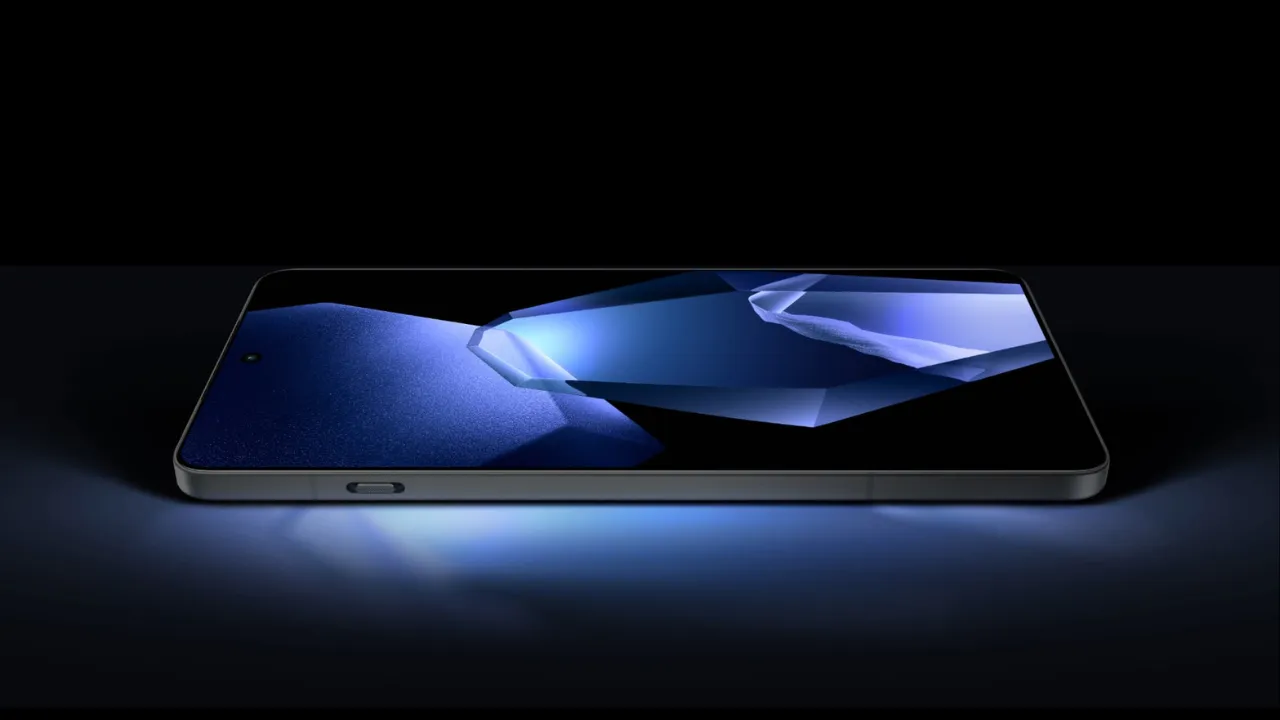Why Are Chinese Phones Always So Cheap?
If you’ve ever shopped for a new smartphone, you’ve probably noticed that Chinese brands offer impressive specs at surprisingly low prices. From powerful processors to high-refresh-rate displays and multi-camera setups, these phones seem too good to be true for the price. This naturally leads to the question—why Chinese phones are so cheap compared to brands like Apple, Samsung, or even some Indian manufacturers?
The answer lies in a combination of smart strategies, large-scale production, and cost-saving techniques that Chinese companies have mastered over the years. Brands like Xiaomi, Realme, and Vivo don’t just compete on features—they compete on efficiency. Their phones are manufactured in massive volumes, allowing them to benefit from economies of scale. Simply put, producing millions of units brings the per-unit cost down drastically.
In addition, China has a highly optimized supply chain. Most components are locally sourced or manufactured in nearby regions, which cuts shipping and logistics costs. Labor costs are also relatively lower, and government incentives for tech exports further reduce the final price. Moreover, these companies focus heavily on online sales, which helps them avoid retail middlemen and costly distribution networks.
Another reason why Chinese phones are so cheap is that many brands operate on very thin profit margins. Instead of making huge profits per device, they aim to build a massive user base and make money through ecosystem services, apps, and advertisements.
Understanding these reasons helps consumers make informed decisions. Buying a budget-friendly phone doesn’t always mean compromising on quality—it often means you’re benefiting from a smarter, more aggressive business model.
China’s Manufacturing Powerhouse Advantage
One of the key reasons why Chinese phones are so cheap lies in China’s dominance as a global manufacturing hub. Over the years, China has built an incredibly efficient and large-scale ecosystem specifically designed for electronics production. From smartphone components like processors, batteries, and camera modules to the final assembly, everything can be sourced, produced, and assembled within the country’s industrial clusters. This dramatically reduces production time and logistics costs.
Shenzhen, often called the “Silicon Valley of Hardware,” is home to hundreds of factories and suppliers working closely together. This tight-knit network means that Chinese smartphone companies can get access to components faster and cheaper than competitors in other parts of the world. When a phone brand wants to launch a new model, it can go from design to mass production in a matter of weeks—something that’s nearly impossible in most countries.
Another major advantage is the well-developed supply chain. Unlike countries that rely on imports for components, China manufactures almost everything in-house. This vertical integration leads to lower production costs, better quality control, and faster delivery schedules.
When we ask why Chinese phones are so cheap, this manufacturing efficiency is a huge part of the answer. Companies don’t have to spend extra on international logistics or deal with supply delays. Everything they need is available locally and at scale.
In simple terms, China’s manufacturing powerhouse gives its phone makers a home-ground advantage. It allows them to experiment, iterate, and innovate faster while keeping costs low. And the end benefit of this system? Consumers across the world get access to feature-rich smartphones at incredibly competitive prices.
Mass Production = Lower Costs
When it comes to smartphone manufacturing, scale matters more than most people realize. One of the biggest reasons why Chinese phones are so cheap is the sheer volume in which they are produced. Chinese brands like Xiaomi, Realme, and Vivo manufacture millions of units of the same model, allowing them to significantly reduce per-unit costs through mass production.
This concept, known as economies of scale, means that the more units you produce, the lower the cost becomes for each one. From buying raw materials in bulk to running assembly lines 24/7, Chinese smartphone companies have optimized every step of the process. They often share components across different models, which further reduces cost without compromising quality.
Large-scale production also allows brands to invest in automation. Many Chinese factories use advanced robotics and automated systems to speed up production and minimize errors. Less human intervention not only saves time but also reduces labor expenses in the long run. All of this adds up to lower production costs, which allows brands to sell smartphones at budget-friendly prices while still turning a profit.
This strategy is one of the main answers to why Chinese phones are so cheap in global markets. It’s not about making low-quality devices—it’s about producing quality at scale. By focusing on volume, Chinese companies can offer impressive specifications and modern features in phones that are accessible to a wider audience.
In a market where price often determines purchase decisions, mass production gives Chinese smartphone brands a strong competitive edge. It’s a win-win for both the manufacturer and the consumer.
Low Labor Costs in China’s Tech Hubs
One of the lesser-known but powerful reasons why Chinese phones are so cheap is the relatively low labor cost in China’s major tech hubs. Cities like Shenzhen, Dongguan, and Chengdu have become the heart of electronics manufacturing, with a vast pool of skilled and semi-skilled workers available at wages significantly lower than those in Western countries or even other parts of Asia. China’s lower labor costs, as reported by World Bank, enable manufacturers to reduce overall production expenses
Unlike countries where labor regulations, worker benefits, and minimum wage standards increase production expenses, China has managed to maintain a balance between industrial growth and cost efficiency. In these tech hubs, factory workers are trained to handle precise assembly-line tasks at high speed, ensuring fast output without high labor costs. This keeps the overall manufacturing budget low, allowing brands to price their phones competitively.
In addition, the cost of living in many of these industrial regions remains relatively manageable. Factory accommodations, food, and transportation are often provided by employers, which further reduces the need for high wages. These savings are not pocketed by the companies alone—they’re passed on to the customer in the form of affordable pricing.
When we talk about why Chinese phones are so cheap, labor cost becomes a crucial factor. It doesn’t necessarily mean poor working conditions, but rather an optimized labor market built to support high-volume manufacturing. This environment allows smartphone brands to keep assembly costs down while meeting massive global demand.
For consumers, this means getting more features, better hardware, and modern designs at a fraction of the cost you’d expect from non-Chinese brands. While labor cost is just one part of the pricing equation, it plays a key role in making Chinese smartphones so widely accessible.
Government Support and Export Subsidies
A major reason why Chinese phones are so cheap is the strong backing that Chinese smartphone companies receive from their government. Unlike many other countries, where tech companies operate largely independently, China’s government actively supports its electronics industry through various incentives, subsidies, and export benefits. This plays a big role in lowering the final cost of production and distribution.
Chinese authorities have long recognized the global potential of their tech sector. To encourage rapid growth, they provide low-interest loans, tax rebates, and subsidies on raw materials and energy to manufacturers. These benefits directly reduce the overall cost of making a smartphone. When a company doesn’t have to pay full market rates for power, logistics, or factory space, it can price its products far more competitively.
Export incentives are another major factor in understanding why Chinese phones are so cheap in international markets. The Chinese government offers support in the form of reduced export duties and easier customs processes. This allows companies to ship large volumes of smartphones to global markets at minimal additional cost, giving them an edge over foreign competitors who may face higher export taxes or complex trade regulations.
Additionally, local governments in industrial zones often offer land at discounted rates or even build infrastructure tailored to tech manufacturers. This creates an ecosystem where every part of the production and supply chain is optimized for efficiency and cost-effectiveness.
In short, the aggressive support from the Chinese government is not just about patriotism—it’s a calculated move to dominate the global smartphone market. By reducing financial pressure on manufacturers and making exports smoother and cheaper, the government plays a hidden but powerful role in ensuring Chinese smartphones remain affordable and attractive across the world.
Use of Affordable Materials and Components
Another key reason why Chinese phones are so cheap is the strategic use of affordable materials and components during manufacturing. Chinese smartphone brands have mastered the art of balancing cost and quality by sourcing parts that are economical yet capable of delivering decent performance. This smart component selection helps reduce overall production costs without significantly affecting the user experience.
Instead of using premium materials like metal or glass on all models, many Chinese phones use high-quality polycarbonate or plastic that mimics the look and feel of flagship designs. These materials are cheaper to produce, easier to mold, and lighter in weight, which also helps in cutting transportation costs.
When it comes to internal components, Chinese brands often use processors from manufacturers like MediaTek, which are more budget-friendly than Qualcomm’s high-end chips. While these processors may not always match the top-tier performance of flagship phones, they’re more than enough for everyday tasks like browsing, social media, and casual gaming. This makes them an ideal choice for mid-range and budget devices.
Another smart move is using slightly older versions of sensors, display panels, or charging technology. These components are usually still in production but come at a lower cost due to newer alternatives being available in the market. This allows brands to offer competitive specs on paper while keeping prices low.
Understanding this approach sheds more light on why Chinese phones are so cheap. It’s not about cutting corners—it’s about making smart, cost-effective choices that still deliver value. By focusing on what matters most to budget-conscious users, Chinese brands manage to keep their phones affordable without severely compromising on features or performance.
Aggressive Market Penetration Strategies
One of the strongest reasons why Chinese phones are so cheap is the aggressive market penetration strategies adopted by brands like Xiaomi, Realme, Poco, and Infinix. These companies don’t just aim to sell smartphones—they aim to dominate markets quickly, and for that, pricing plays a crucial role. Instead of focusing on profit per unit, they focus on acquiring as many users as possible, even if it means selling devices at extremely low profit margins or sometimes even at cost.
The idea is simple: get into the hands of millions, build brand recognition, and then expand the product ecosystem. Chinese brands often enter new markets with flash sales, promotional discounts, and online-first launches that create hype and drive massive volumes in a short span. This rapid adoption helps them gain a foothold in competitive regions like India, Southeast Asia, and Africa, where users are highly price-sensitive.
Another tactic that supports why Chinese phones are so cheap is bundling. Brands frequently bundle budget smartphones with data offers, accessories, or exchange schemes to sweeten the deal. This makes it harder for consumers to ignore the value being offered, even if the brand is new or lesser known.
Chinese smartphone makers also aggressively partner with e-commerce platforms to minimize distribution costs. By skipping traditional retail channels, they avoid paying commissions to middlemen, allowing them to sell at lower prices. These savings are passed on directly to the consumer.
In summary, aggressive pricing is not just a feature—it’s a long-term strategy. Chinese brands are willing to sacrifice short-term profits for long-term brand loyalty and market share. This approach plays a vital role in explaining why Chinese phones are so cheap, especially when they’re entering new or highly competitive markets.
Online-First Sales Model to Cut Costs
Another major factor explaining why Chinese phones are so cheap is their reliance on an online-first sales model. Unlike traditional brands that depend heavily on physical retail stores, Chinese smartphone companies focus primarily on e-commerce platforms to sell their devices. This approach eliminates a huge chunk of operational and distribution costs, allowing them to price their phones more competitively.
When a brand sells through retail outlets, it has to deal with store rentals, staff salaries, transportation, warehousing, and retailer commissions. All these costs add up and are often passed on to the consumer in the form of higher prices. Chinese brands bypass this entire setup by launching their products directly through online platforms like Amazon, Flipkart, and their own websites. The result? Lower costs and lower prices.
In fact, many Chinese brands create online flash sales with limited stock, generating hype and selling thousands of units within minutes. This strategy not only reduces inventory risk but also minimizes unsold stock losses. It keeps the entire process lean, fast, and cost-efficient.
This direct-to-consumer model also allows brands to collect feedback quickly, manage demand better, and adjust pricing or features based on real-time customer data. They save on marketing as well by relying heavily on social media buzz, influencer reviews, and word-of-mouth instead of traditional advertising channels.
So when people ask why Chinese phones are so cheap, the sales model is a key part of the answer. By selling online first, these brands reduce overhead, optimize logistics, and pass on the savings to the buyers. For budget-conscious consumers, this means they get more value without paying for unnecessary distribution costs.
Minimal Marketing Budget, Maximum Reach
A big reason why Chinese phones are so cheap is the clever way these brands handle marketing. Instead of spending massive amounts on TV commercials, billboards, and celebrity endorsements like traditional brands, Chinese smartphone companies focus on low-cost, high-impact marketing strategies. They understand that keeping the marketing budget lean allows them to invest more in product quality and keep prices competitive.
Most Chinese brands rely heavily on digital marketing. Platforms like YouTube, Instagram, and Twitter are filled with tech influencers and reviewers showcasing their latest phones. These partnerships cost far less than traditional media campaigns and often have a stronger impact, especially on younger audiences who prefer watching online reviews before making a purchase.
Additionally, brands like Xiaomi and Realme build online communities and fan bases through forums, events, and social media interactions. They engage directly with users, gather feedback, and create a sense of loyalty—all without spending much. This organic brand-building method helps them reach millions while maintaining a minimal marketing budget.
Another reason why Chinese phones are so cheap is that these brands often time their launches around major online sales events like festive seasons or flash sales. Instead of spending on ongoing campaigns, they focus on timed promotions that create urgency and buzz at a fraction of the cost.
In essence, the goal is simple: achieve maximum visibility with minimal spend. This strategy helps reduce the overall cost of getting the product to the market, and those savings are passed on to the customer. While other brands factor in heavy advertising costs into the phone’s price, Chinese manufacturers skip that burden, making their smartphones not just affordable but also widely visible through smart, efficient promotion.
Data Monetization and Ad-Supported Software
One of the most overlooked but powerful reasons why Chinese phones are so cheap is the way these companies monetize user data and integrate ad-supported software into their devices. While this might sound technical, it’s actually a major part of how brands like Xiaomi and others keep smartphone prices low while still maintaining profitability.
Many Chinese phone makers offer their devices at ultra-competitive prices with slim or no profit margins. Instead, they focus on long-term earnings through software-based revenue. This includes pushing ads within system apps like themes, file managers, and even in the settings menu. These ads are subtle but widespread, creating a recurring stream of income that continues even after the phone has been sold.
In addition to ads, companies also collect anonymous user data—such as usage habits, preferences, and app interactions. This data is used to improve services, personalize recommendations, and sometimes shared with third-party partners in compliance with their privacy policies. The goal is to create a parallel revenue model that doesn’t rely solely on hardware sales.
This business strategy plays a big role in answering why Chinese phones are so cheap. By generating post-sale income, these brands can afford to sell phones at break-even or even below manufacturing cost. The hardware becomes a gateway to the software and service ecosystem, where the real money is made.
For the end user, this model offers a trade-off—more affordable phones, but possibly a slightly more ad-filled experience. Thankfully, many ads can be disabled manually, and most users are willing to accept them in exchange for premium features at a budget price. In the end, this software-driven monetization strategy allows Chinese brands to offer excellent value while building a sustainable business beyond just selling devices.
Focus on Quantity, Not Premium Margins
A major reason why Chinese phones are so cheap is that most Chinese smartphone brands focus on selling in massive volumes rather than chasing high-profit margins. Unlike premium brands like Apple or Samsung that make a significant profit on each device, Chinese companies follow a different path—sell more units, even if the profit per unit is minimal.
This quantity-over-margin strategy helps brands like Xiaomi, Realme, and Infinix capture huge market share, especially in price-sensitive countries like India, Indonesia, and Africa. By offering well-equipped smartphones at aggressive prices, they attract a large number of first-time buyers and budget-conscious users. The more devices they sell, the more they benefit from economies of scale, which further brings down manufacturing costs.
These companies understand that building a loyal user base is more valuable in the long run than making high profits immediately. Once a user is part of their ecosystem, they’re more likely to buy related products like smartwatches, earbuds, and smart TVs, or use the brand’s apps and services. This long-term strategy fuels steady growth while keeping phone prices low.
Another benefit of this approach is fast market penetration. Chinese brands can quickly launch multiple models at different price points, giving consumers more choices and reducing the gap between budget and premium features. This makes it easier for them to stay competitive in every segment.
So when we ask why Chinese phones are so cheap, it’s not just about cutting corners—it’s about choosing a different business model. By focusing on volume rather than high margins, these companies manage to stay profitable while offering customers more value for their money. It’s a strategy that’s reshaping the smartphone industry worldwide.
Economies of Scale in Component Sourcing
One of the smartest ways Chinese smartphone brands reduce their production costs—and a big reason why Chinese phones are so cheap—is through economies of scale in component sourcing. When companies manufacture devices in massive volumes, they’re able to negotiate better deals with suppliers, buy parts in bulk, and streamline their entire supply chain. This significantly lowers the cost of each component used in a smartphone.
Major Chinese brands like Xiaomi, Oppo, and Vivo often use the same display panels, camera sensors, batteries, and even chipsets across multiple models. This reduces the need for custom components and simplifies manufacturing. For example, the same 50MP camera sensor or 5000mAh battery might be used in five different models across various price points. Buying these parts in bulk allows them to pay much less per unit compared to smaller competitors or premium brands.
This bulk purchasing advantage extends to everything—from packaging and charging adapters to software development and testing processes. The larger the order, the more room there is for suppliers to offer discounts, faster delivery, or additional services. As a result, production becomes faster, cheaper, and more efficient.
Economies of scale also reduce wastage. With more predictable demand and standardization across devices, there’s less risk of unsold stock or leftover parts. This tight control over inventory ensures that every rupee spent brings more value to the final product.
So when consumers ask why Chinese phones are so cheap, it’s important to understand how strategic component sourcing plays a huge role. It’s not just about cutting quality or using cheap materials—it’s about building a system where volume drives down cost. This allows brands to offer advanced features and reliable hardware at a price point that feels almost unbeatable.
Are Cheap Chinese Phones Actually Low Quality?
One of the biggest myths surrounding budget-friendly smartphones is that low price equals low quality. And since Chinese brands dominate the affordable smartphone market, many people assume that cheap Chinese phones are unreliable or poorly made. But is that really true? Not entirely. In fact, the reality is more balanced and far more interesting.
While it’s true that some ultra-budget models may compromise on certain materials or advanced features, most popular Chinese phones today offer surprisingly solid build quality and performance for their price. Brands like Xiaomi, Realme, and Vivo have consistently delivered devices with powerful processors, high-resolution displays, long-lasting batteries, and decent camera systems—often outperforming similarly priced competitors.
The reason why Chinese phones are so cheap has more to do with smart business strategies than cutting corners on quality. These companies focus on mass production, efficient supply chains, and cost-saving techniques like online sales and low marketing budgets. That allows them to keep prices low without making the product feel cheap.
However, it’s important to be realistic. You won’t get flagship-grade materials or premium features in a phone that costs a fraction of what high-end devices do. But for everyday use—like browsing, social media, watching videos, and casual gaming—most affordable Chinese smartphones perform reliably and offer excellent value.
In fact, many of these brands have improved their quality standards over the years to compete globally. They now offer regular software updates, better after-sales service, and extended warranty options to gain consumer trust.
So, are cheap Chinese phones actually low quality? Not necessarily. If you buy from a reputable brand and choose the right model for your needs, you’re more likely to be impressed by how much you get for the price. The key is understanding what you need and matching it with the right device.
How They Compare With Samsung, Apple, and Others
When it comes to smartphone choices, brands like Samsung and Apple often dominate the premium space. But over the past few years, Chinese phones have rapidly caught up—not just in market share, but in features, design, and performance. This shift raises an important question: how do these affordable Chinese phones compare with global giants like Samsung, Apple, and even other Android competitors?
The most obvious difference is in pricing. One of the key reasons why Chinese phones are so cheap is their focus on value-driven pricing. For the same price that gets you a mid-range Samsung phone or a dated iPhone SE, Chinese brands like Xiaomi, Realme, and OnePlus often offer better specs—higher refresh rate displays, bigger batteries, more RAM, faster charging, and even higher megapixel cameras.
When it comes to innovation, Chinese brands are surprisingly fast. Features like pop-up cameras, under-display fingerprint sensors, and ultra-fast charging were often seen first on Chinese phones before reaching global brands. They are more willing to experiment and bring cutting-edge features to budget segments.
However, brands like Samsung and Apple still lead in areas like software optimization, long-term updates, ecosystem integration, and brand trust. Apple’s iOS and Samsung’s One UI are widely appreciated for their smooth performance and security. Apple also offers unmatched ecosystem benefits with AirPods, Mac, and Apple Watch syncing seamlessly. Chinese phones, while improving, often lag in consistent software updates and long-term support.
Build quality and durability is another area where premium brands still have the edge. Flagship models from Samsung and Apple use premium materials and undergo stricter quality control.
In short, while Chinese phones excel in pricing and hardware features, global brands continue to lead in software polish, ecosystem experience, and long-term support. Depending on what you value more—performance per rupee or a refined premium experience—your choice may vary.
Final Verdict – Should You Trust Cheap Chinese Phones?
With so many options available today, it’s natural to wonder whether cheap Chinese phones are truly worth your money. After exploring the reasons why Chinese phones are so cheap—from mass production and government support to cost-effective marketing and smart component sourcing—it becomes clear that their affordability isn’t a result of poor quality, but of strategic efficiency.
Most Chinese smartphone brands like Xiaomi, Realme, and Vivo offer exceptional value for budget-conscious consumers. They manage to pack impressive hardware, attractive designs, and useful features into devices that cost significantly less than those from traditional global brands. Their aggressive pricing strategies, online-first sales models, and lean operations allow them to pass the savings on to you.
That said, it’s important to approach your purchase with realistic expectations. Cheap Chinese phones may not always match the premium build quality, long-term software support, or brand prestige offered by companies like Apple or Samsung. Some budget models may include ads in the UI or cut corners in non-critical areas like camera optimization or display brightness. But for everyday tasks—like social media, video streaming, gaming, and multitasking—they often perform remarkably well.
If you’re looking for a solid smartphone without breaking the bank, trusted Chinese brands are a smart option. Just make sure to buy from a reputable brand, check reviews, and choose a model that suits your specific needs.
So, should you trust cheap Chinese phones? The answer is yes—provided you understand what you’re buying and choose wisely. These phones prove that quality doesn’t always have to come with a premium price tag. In many cases, they deliver far more than you’d expect for the cost.
Also Read: First Photo on Internet (1992): The Untold Story Behind It
FAQs – Most Common Questions Answered
Q1. Why are Chinese phones so cheap compared to other brands?
Chinese phones are cheap due to mass production, low labor costs, government support, and smart cost-saving strategies like online sales and minimal marketing expenses. Brands focus on volume sales and earn through software or ecosystem services rather than high profit margins per device.
Q2. Does cheap mean low quality in Chinese smartphones?
Not necessarily. While some entry-level models may compromise on certain features, most Chinese smartphones from reputable brands offer solid performance, good build quality, and value-packed features at affordable prices.
Q3. Is it safe to use Chinese phones?
Yes, most major Chinese brands comply with international security standards. However, like with any smartphone, it’s important to review app permissions, avoid shady downloads, and keep your software updated for better security.
Q4. Why do Chinese phones have ads in the interface?
Some Chinese brands include ads in their UI to generate additional revenue. This helps keep phone prices low. Thankfully, most of these ads can be turned off in the settings if they bother you.
Q5. Do Chinese phones receive software updates regularly?
Mid-range and premium models from brands like Xiaomi, OnePlus, and iQOO often receive regular updates. However, budget models may get fewer updates or slower rollouts compared to phones from Apple or Samsung.
Q6. Which Chinese phone brand is the most reliable?
Xiaomi, Realme, and OnePlus are among the most trusted Chinese brands globally. They offer a good balance of price, performance, and after-sales service.
Q7. Are Chinese smartphones worth buying in 2025?
Absolutely. If you’re looking for powerful features, sleek designs, and solid performance at a budget-friendly price, Chinese phones continue to be one of the best options in the market.













